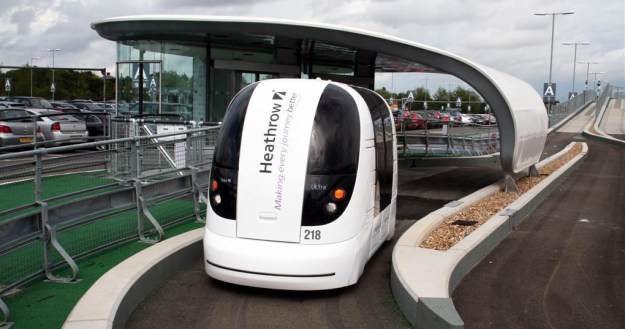
In September of 2010, ULTra PRT, a manufacturer of electric pod cars, and officials at the Heathrow Airport began operational testing on pods that transport visitors to the airport from the terminal to the parking lot. After successful tests, passenger service began in April of this year. Twenty-two pods have replaced 2 diesel-powered buses that usually made over 200 trips a day between the lots and the terminals. The pods travel on designated routes and don’t interfere with traffic moving into the lots. Each pod takes about 5 to 6 minutes to travel the 1.2 miles from the terminal to the car park and all the pods collectively transport about 800 passengers a day.

Based off continued success with the electric pods at Heathrow Airport, ULTra PRT hopes that businesses and governments will invest in similar systems for office parks and dense urban areas. Cost per mile for installation of the system will run a company between $7 to $15 million. ULTra PRT claims that the electric pods are 50 percent more efficient than buses or trams and between 70 to 90 percent more efficient than operating automobiles.


